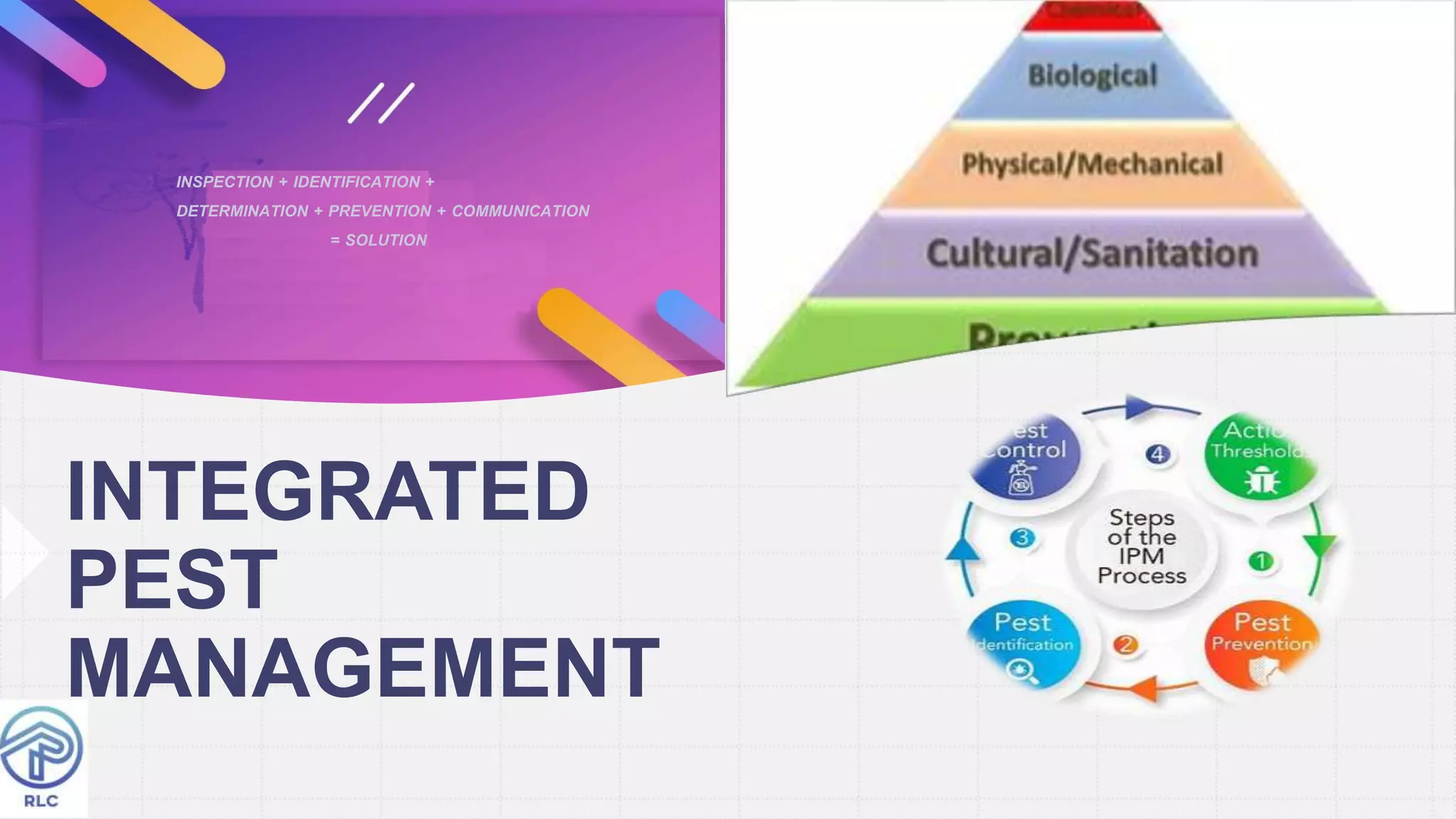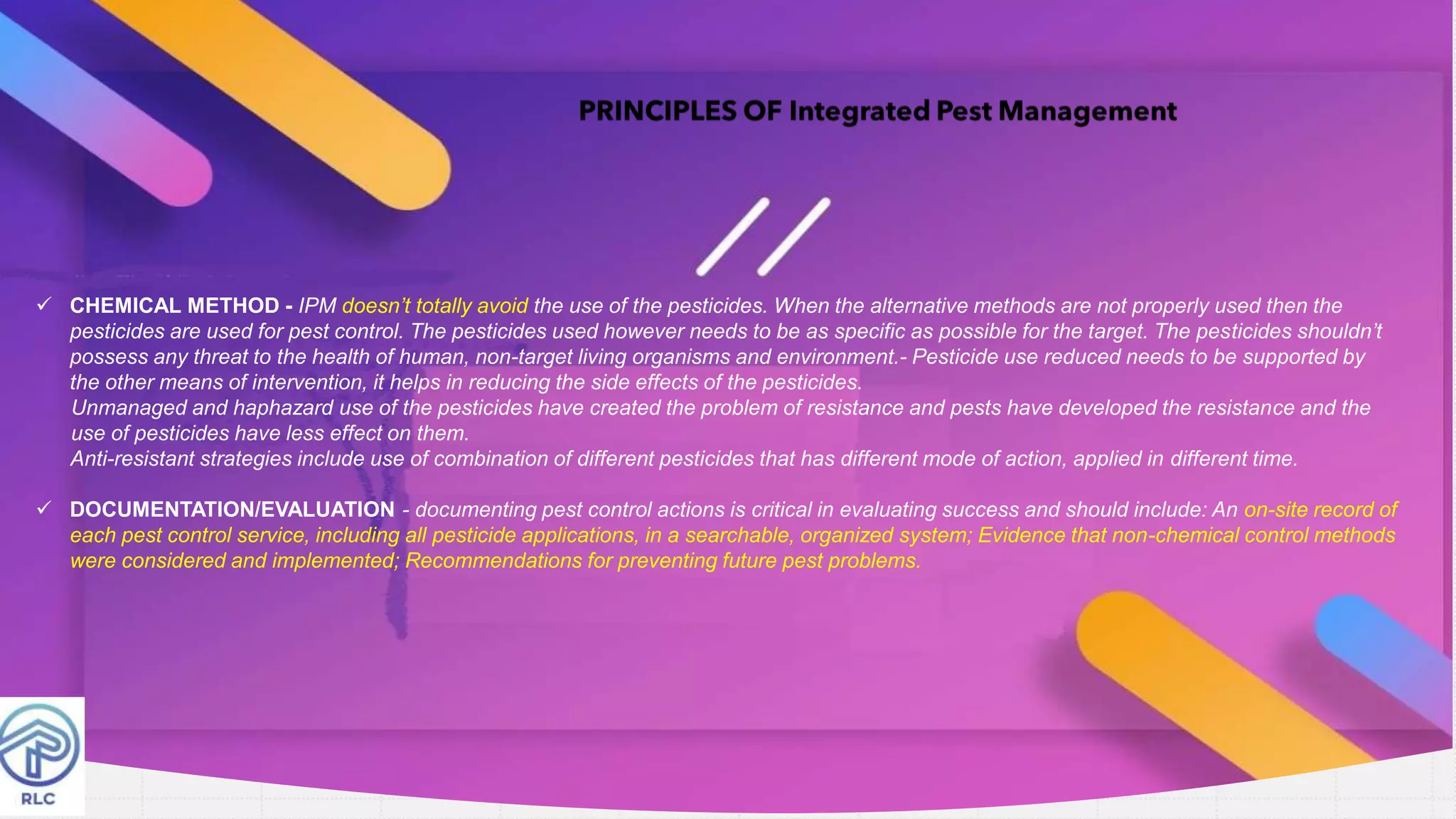Integrated Pest Management (IPM) is an environmentally friendly approach that combines various pest control methods to achieve long-term solutions while reducing the use of pesticides. It emphasizes prevention through sanitation, monitoring pest populations, and making informed decisions based on specific thresholds for intervention. While IPM can be more complex and time-consuming than traditional methods, it offers benefits such as lower costs, reduced environmental impact, and improved health outcomes by minimizing pesticide exposure.







